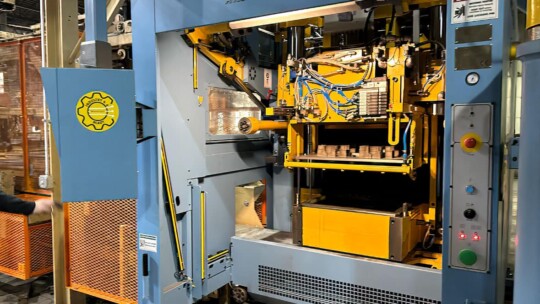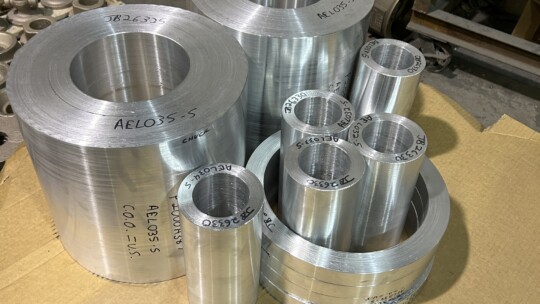FAQs
Sand Casting, Production Capacity, and Specializations
Employing a full range of non-leaded bronze and copper alloys, Erie Bronze produces superior quality sand castings up to 100 pounds. The automated high-capacity molding line along with the ability to alloy metals and our proprietary degassing processes ensure customers receive the same high quality casting with every pour. Our modern 65,000 square foot foundry is home to the latest technology. Every investment in people, technology and equipment has been made to ensure consistent product quality, reduced lead times and increased efficiency. Focus and flexibility are hallmarks of Erie Bronze and Aluminum. A relentless focus on quality and production speed with quick change flexibility positions Erie Bronze to meet the most demanding requirements, all at a very competitive price.

What is sand casting?
How is a sand casting made?
What are the advantages of sand casting?
- Less expensive than other manufacturing processes such as the investment casting process.
- Sand castings can conform to final shapes, reducing the amount of excess material.
- Shorter lead times due to the manufacturing process of sand castings.
- Pattern equipment is typically less expensive than the other methods of manufacture.
What is the largest size casting you can make?
What is your typical lead time?
What are the benefits of aluminum bronze casting?
What kind of aluminum alloys do you specialize in pouring?
What are the benefits of manganese bronze casting?
Manganese bronze is an alloy with a high load-carrying capacity, capable of operating at comparatively high speeds. While it is known to require lubrication, the alloy also contains excellent mechanical properties and high resistance to corrosion, often being utilized for bearings, bushings, and gears within a number of industries, including oil and gas, aviation, aerospace, and more. The alloy is composed of varying percentages of aluminum, copper, manganese, and iron.
What are the benefits of tin bronze casting?
What are the benefits of silicon bronze casting?

Request a Quote
"*" indicates required fields


